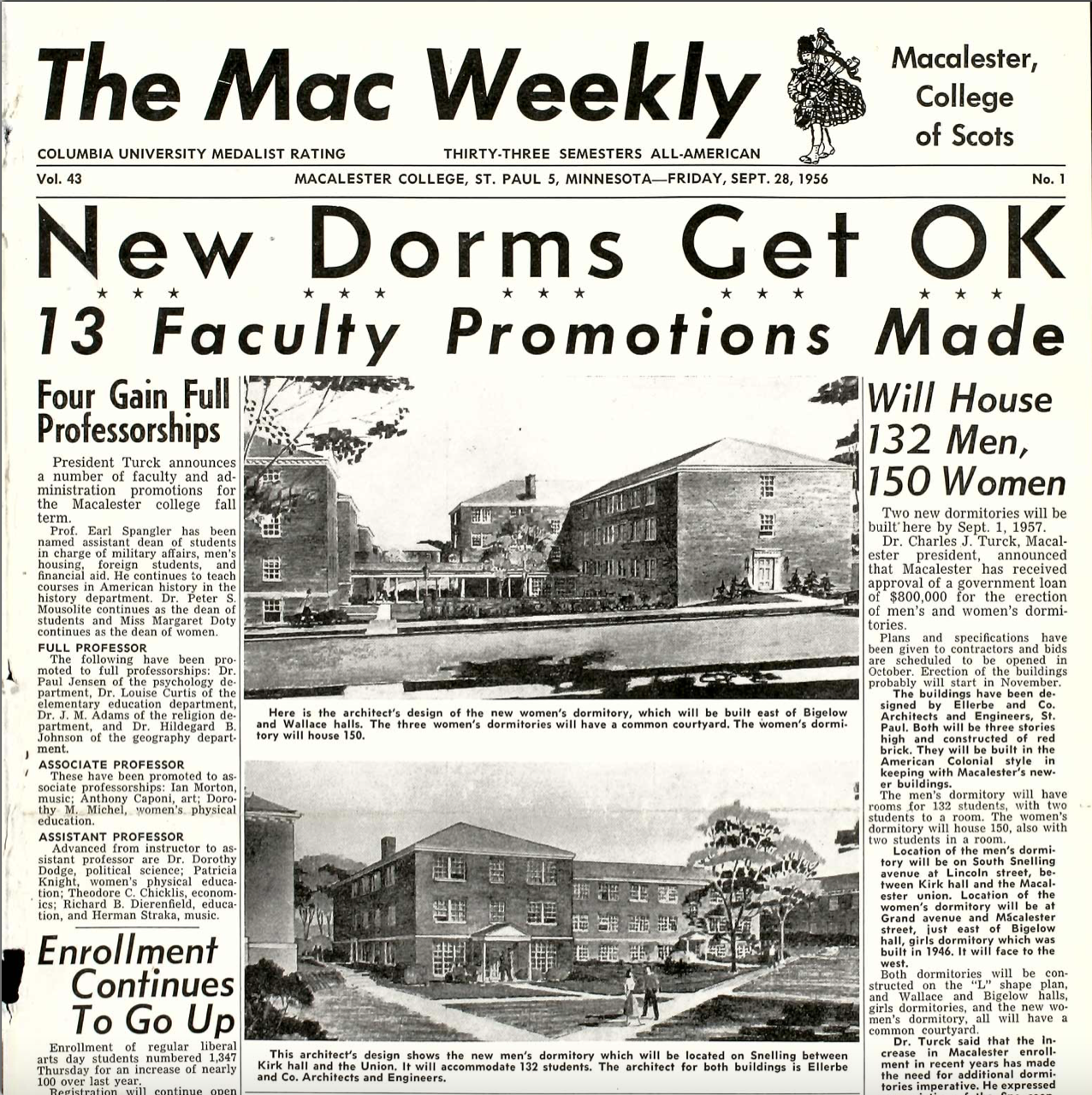Postwar Construction: Gendered Divisions

After the war, though some men and women were once again divided into separate halls, Macalester’s student housing had fundamentally changed. The college’s landscape began to shift as a huge influx of students enrolled at Macalester, with the student body surpassing 1,000 for the first time.1 Several new residence halls were constructed to accommodate the growth. Bigelow was initially constructed in 1946 to house veteran students, though it eventually housed women.2 Just over a decade later, in 1957, Turck and Dayton Halls were built to house women and men respectively.3 During this period, the campus remained physically divided by gender— Wallace, Bigelow, and Turck Halls sat on one side of Grand Avenue, housing women, while Kirk and Dayton Halls housed men on the other side of Grand, closer to Old Main. Students continued to eat separately based on gender, until the Student Union was constructed in 1952, which replaced the Kirk Hall dining room. The Union was open to all students, however women living on campus still typically relied on their dorm dining rooms during the week.
In addition to the construction of traditional dormitories like Bigelow, Turck, and Dayton, Macalester also offered unique living situations for veteran students in particular. Several veteran students already had spouses and children, and therefore needed additional accommodations. With money from the Federal Public Housing Authority, the college constructed several apartments for veterans and their families to live on campus, and the resulting community was dubbed “Macville.” Ultimately, the end of World War II brought a surge of students, requiring the college to be nimble and creative in its construction of housing. Although men and women now had the chance to eat together regularly, individual buildings remained segregated by gender, and the fact that Macville was arranged to accommodate the typical nuclear family reflected the college’s continued comfort with traditional gender roles.
-
“GI’s Boost Register Past 1,000,” Mac Weekly, August 9, 1946, Macalester College Archives. ↩
-
“Dorm To House 116 Vets,” Mac Weekly, March 22, 1946, Macalester College Archives and “Homecoming Dates?”, Mac Weekly, October 29, 1948, Macalester College Archives, 7. ↩
-
“New Dorms Named Turck, Dayton Halls,” Mac Weekly, October 18, 1957, Macalester College Archives, and “New Dorms Get OK,” Mac Weekly, September 28, 1956, Macalester College Archives. ↩